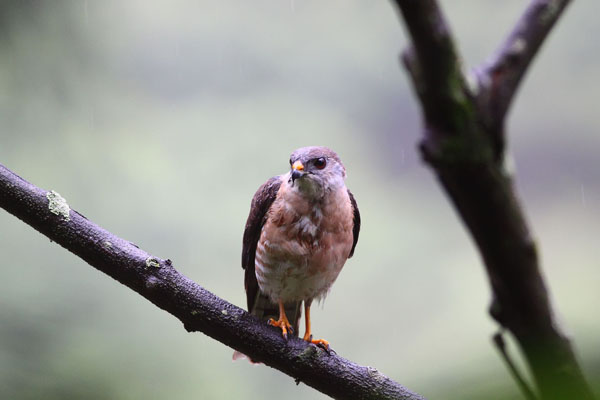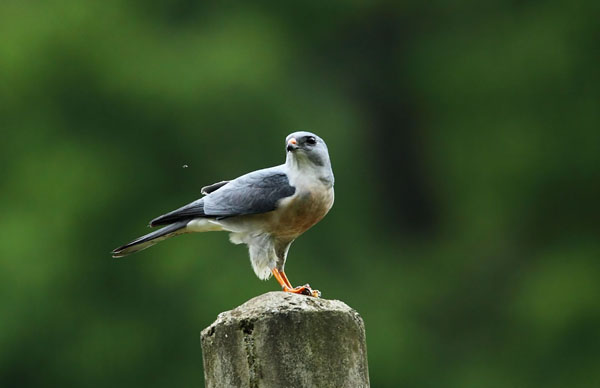Accipiter soloensis
IUCN
LCBasic Information
Scientific classification
- name:Accipiter soloensis
- Scientific Name:Red-bellied Hawk, Goose Hawk, Red-nosed Hawk, Pigeon Hawk
- Outline:Raptor
- Family:Accipitriformes Accipitridae Accipiter
Vital signs
- length:27-36cm
- Weight:108-132g
- lifetime:10-20year
Feature
The IUCN estimates that there are 400,000 to 1 million red-bellied eagles in the world, of which 270,000 to 670,000 are adults.
Distribution and Habitat
Widely distributed in southern my country, mostly as summer migratory birds, a small number of summer migratory birds in the north, wintering or resident birds in southern China and Hainan Island. Abroad, they breed in the Korean Peninsula, winter in the Philippines, Malaysia, Indonesia to New Guinea, and are also recorded in the Indian subcontinent.
They often inhabit open forest areas, mountains, forests, farmlands, villages, etc. In spring and autumn, they can migrate alone or form small or even large groups. In Taiwan Province, in less than two months in the autumn of 2004, 220,000 birds were recorded passing through Kenting, setting a record.
Appearance
Small raptor. Very small hawk, only slightly larger than the Japanese sparrowhawk, with the female being significantly larger than the male.
Only four wing fingers are visible when this species is flying, and both male and female wing fingers are black, which can be quickly distinguished from other raptors of the same species by the color and number of wing fingers. The plumage of males and females is similar. The male has a dark iris and similar plumage to the male Japanese sparrowhawk, but the wing fingers are completely different. The adult male has a blue-gray head and back, no obvious midline of the throat, and the chest and abdomen are mostly orange overall. Some individuals are lighter and whitish, and the eyes are red and black. The adult female is similar to the male, but has a clear yellow iris. The immature bird has a brown back with some white spots, a heavy midline of the throat, thick brown vertical stripes on the chest, and thick horizontal stripes composed of hea
Details
The red-bellied hawk is a small bird of prey with long, pointed wings. It is also called the pigeon hawk because it looks like a pigeon. It often moves alone or in small groups, and often rests on the tops of trees or telephone poles when resting. It mainly feeds on animal food such as frogs and lizards, and also eats small birds, rodents and insects. It mainly hunts on the ground, often standing on high places such as treetops, and suddenly rushes down to hunt when it sees prey.

The red-bellied eagle breeds in May and June. The male eagle is particularly excited at this time, and often excitedly sends a show-off call similar to "Keee-Keee" to the opposite sex, and even screams when building a nest. The eagle's nest is located in the bushes in the forest, made of dead branches and green leaves. Each nest lays 2-5 eggs, which are 34-38 mm × 29-30 mm in size. The eggs are light blue-white with inconspicuous brown spots. During the 30 days when the female eagle incubates alone, fresh green leaves are added every day as bedding for the bird's nest. Perhaps this is related to the need to maintain a certain humidity in the nest during the incubation period.

The number of red-bellied eagles is very small and extremely rare. It is listed as a national Class II key protected animal in China and has been listed in Appendix II of the Convention on International Trade in Endangered Species of Animals and Flora (CITES) for protection.
In May 2022, two red-bellied eagles flew into the woods of Meihua Mountain in Nanjing.








